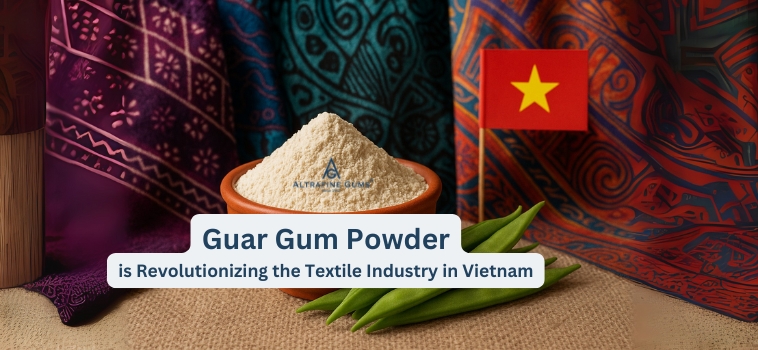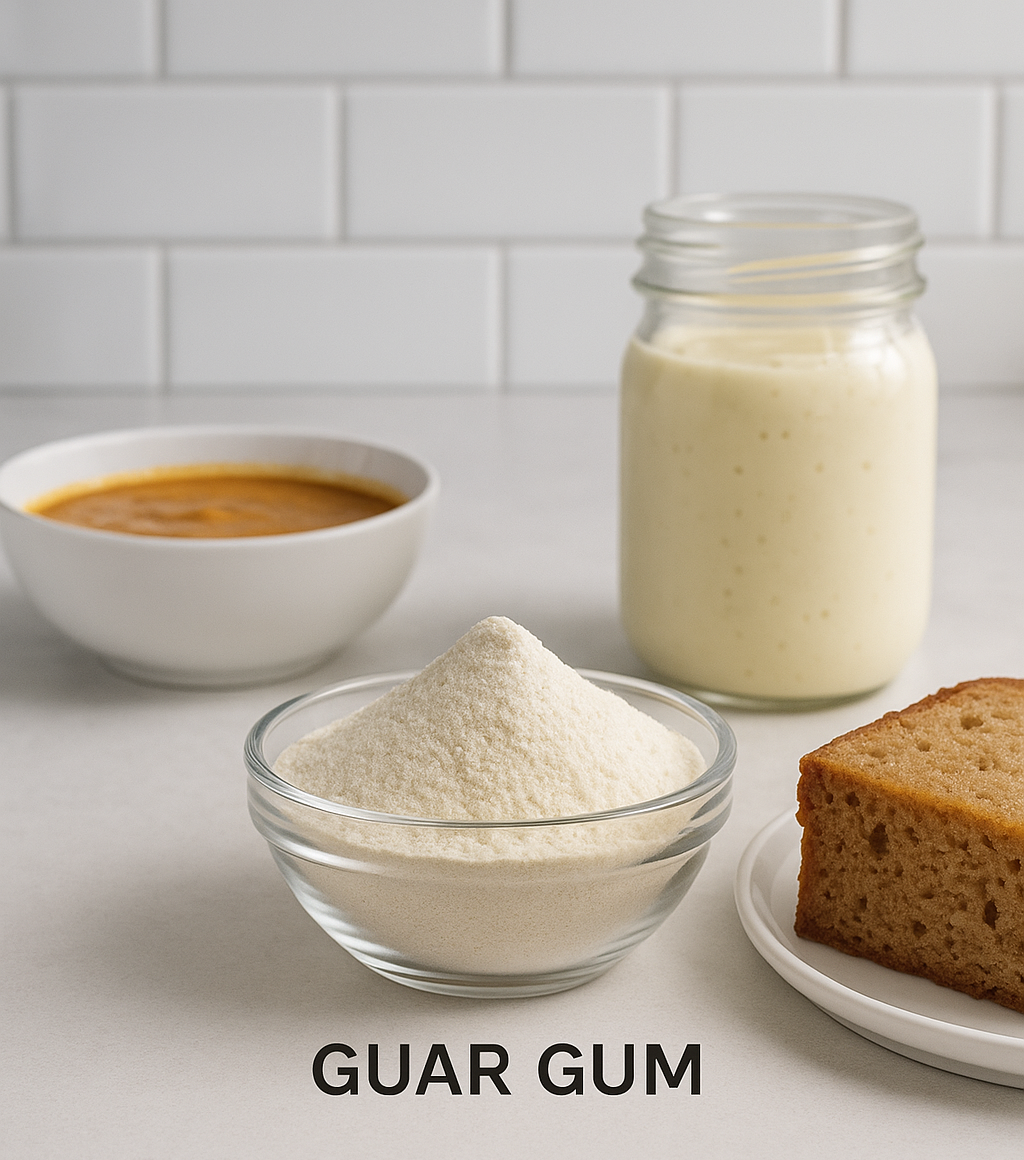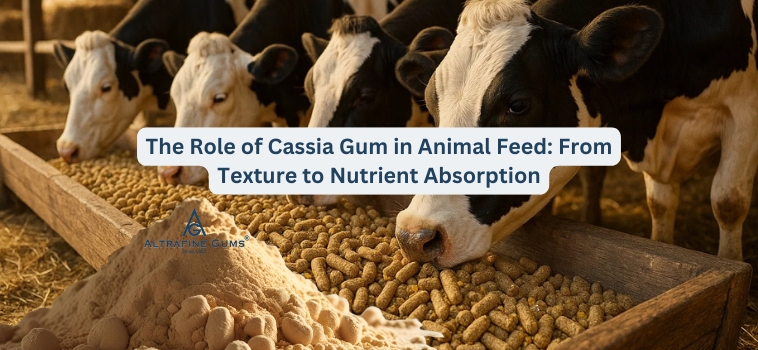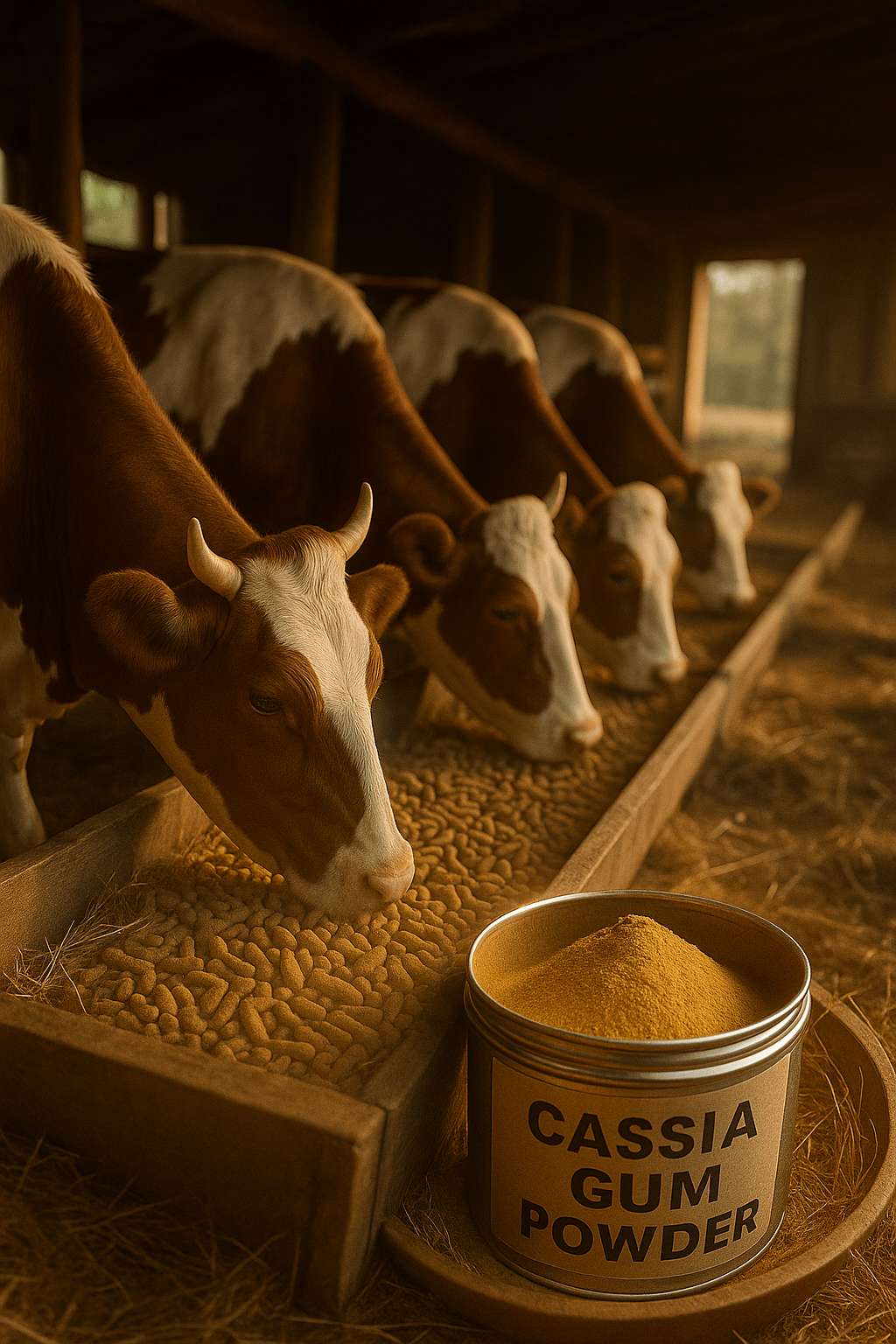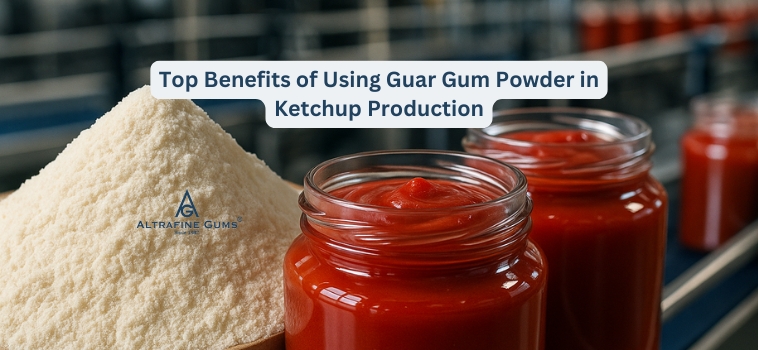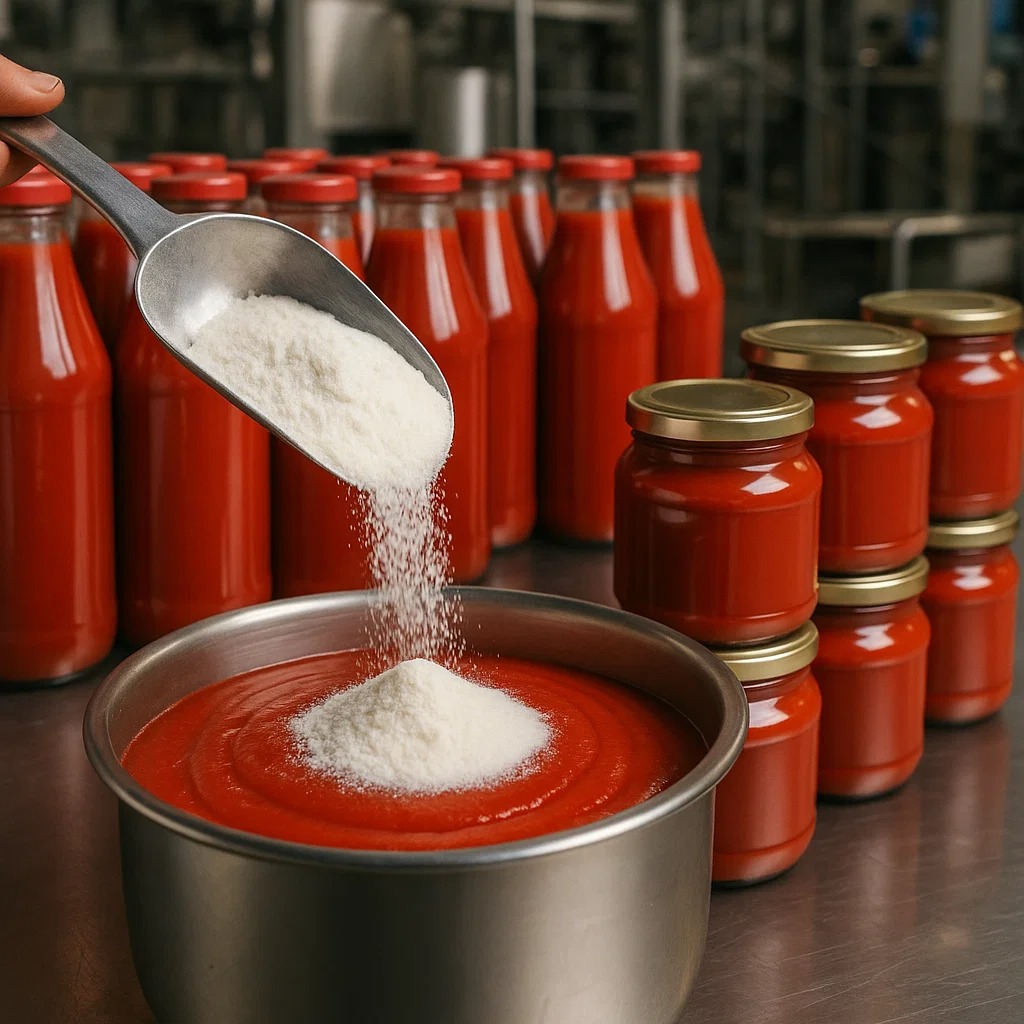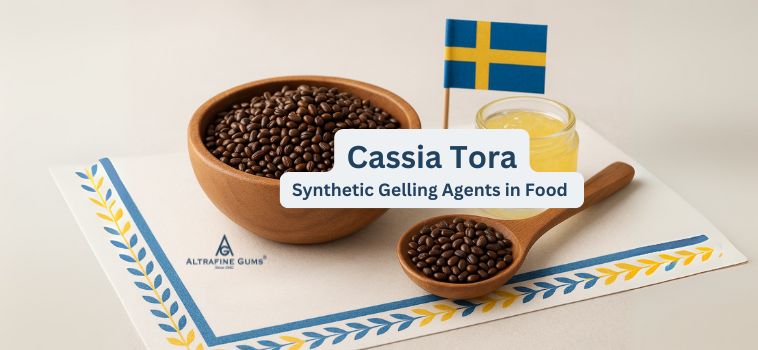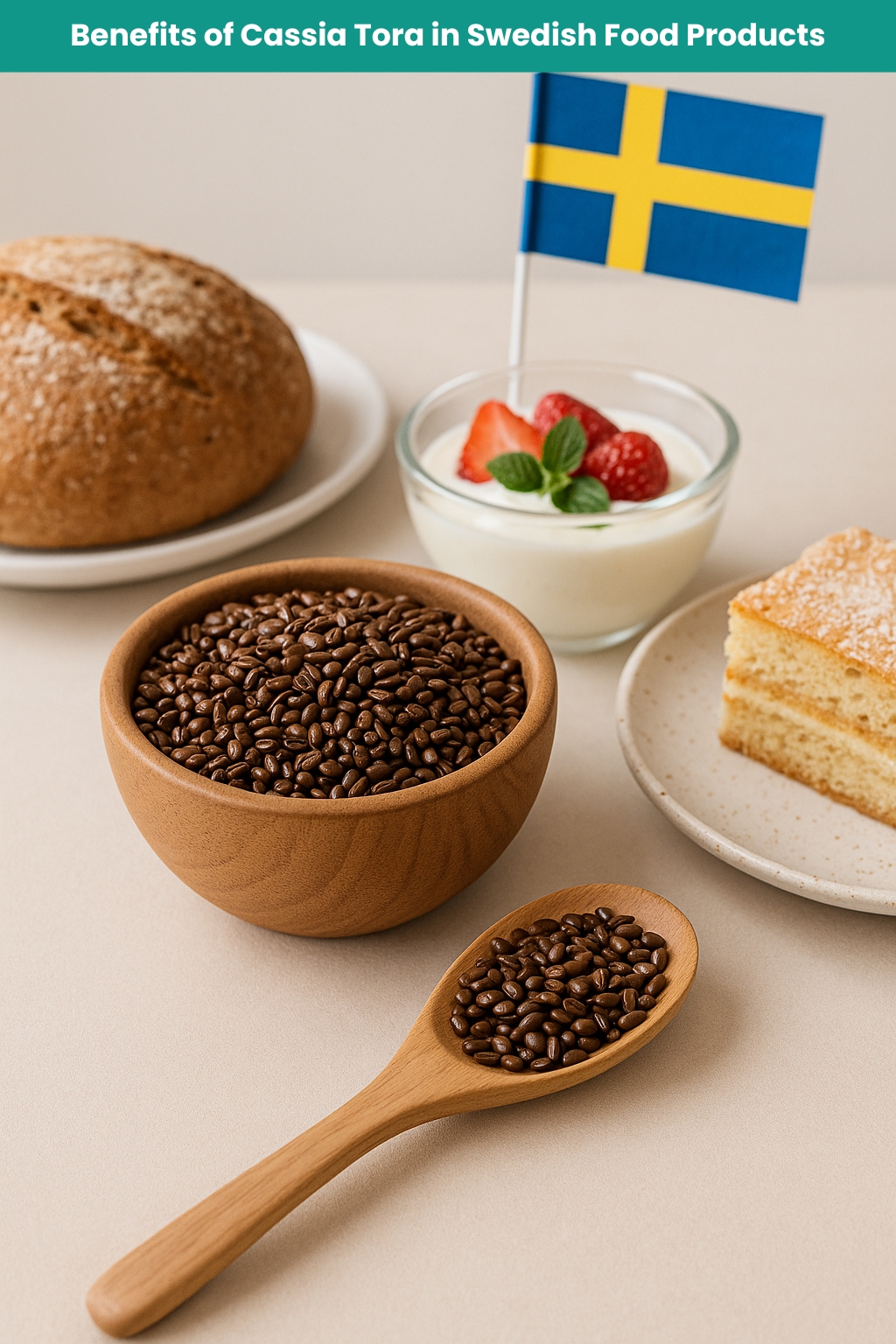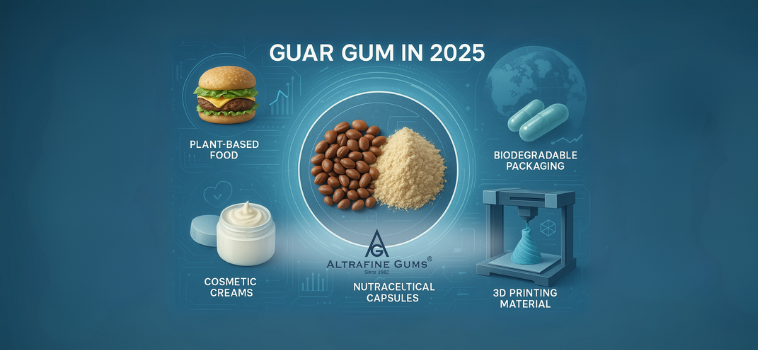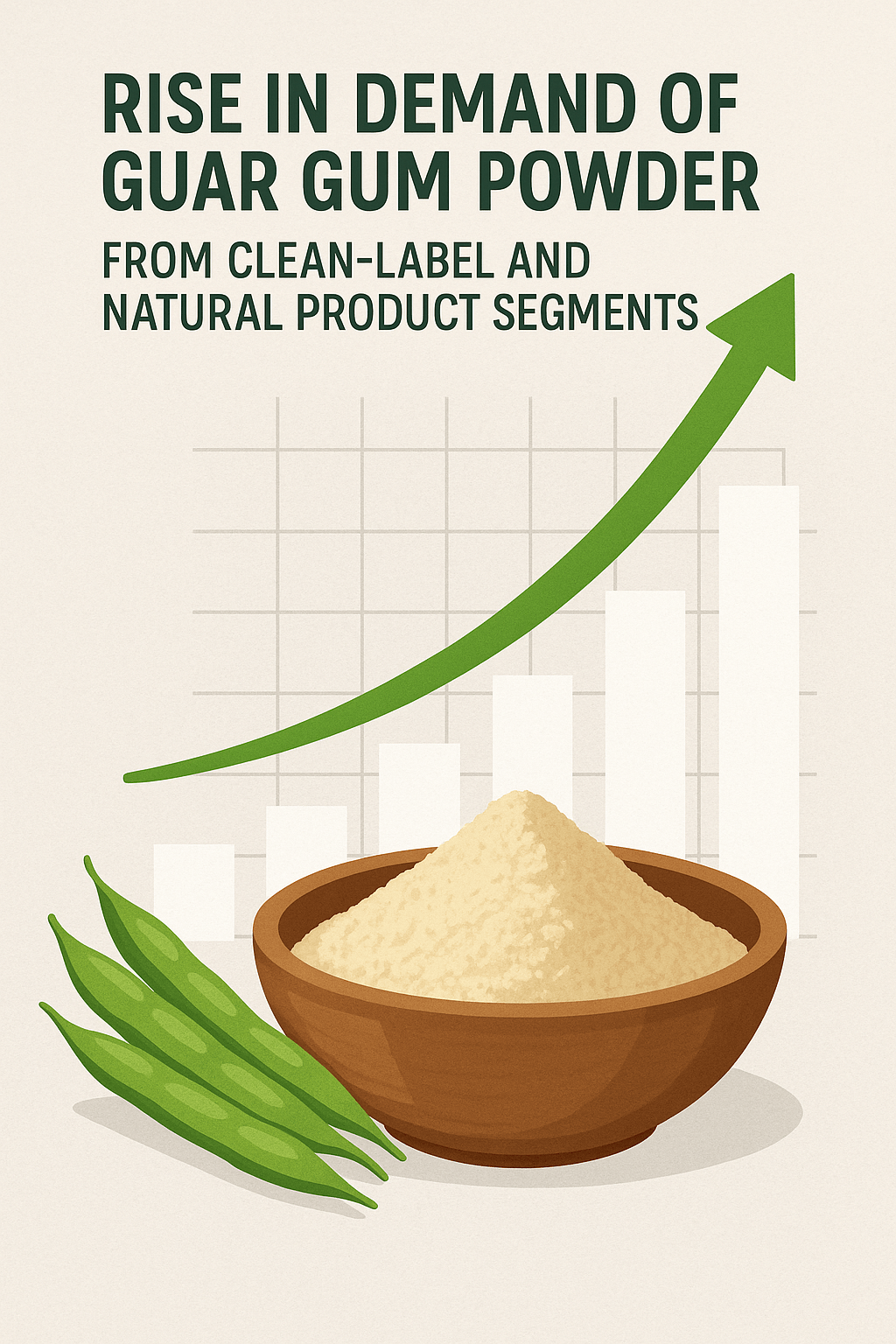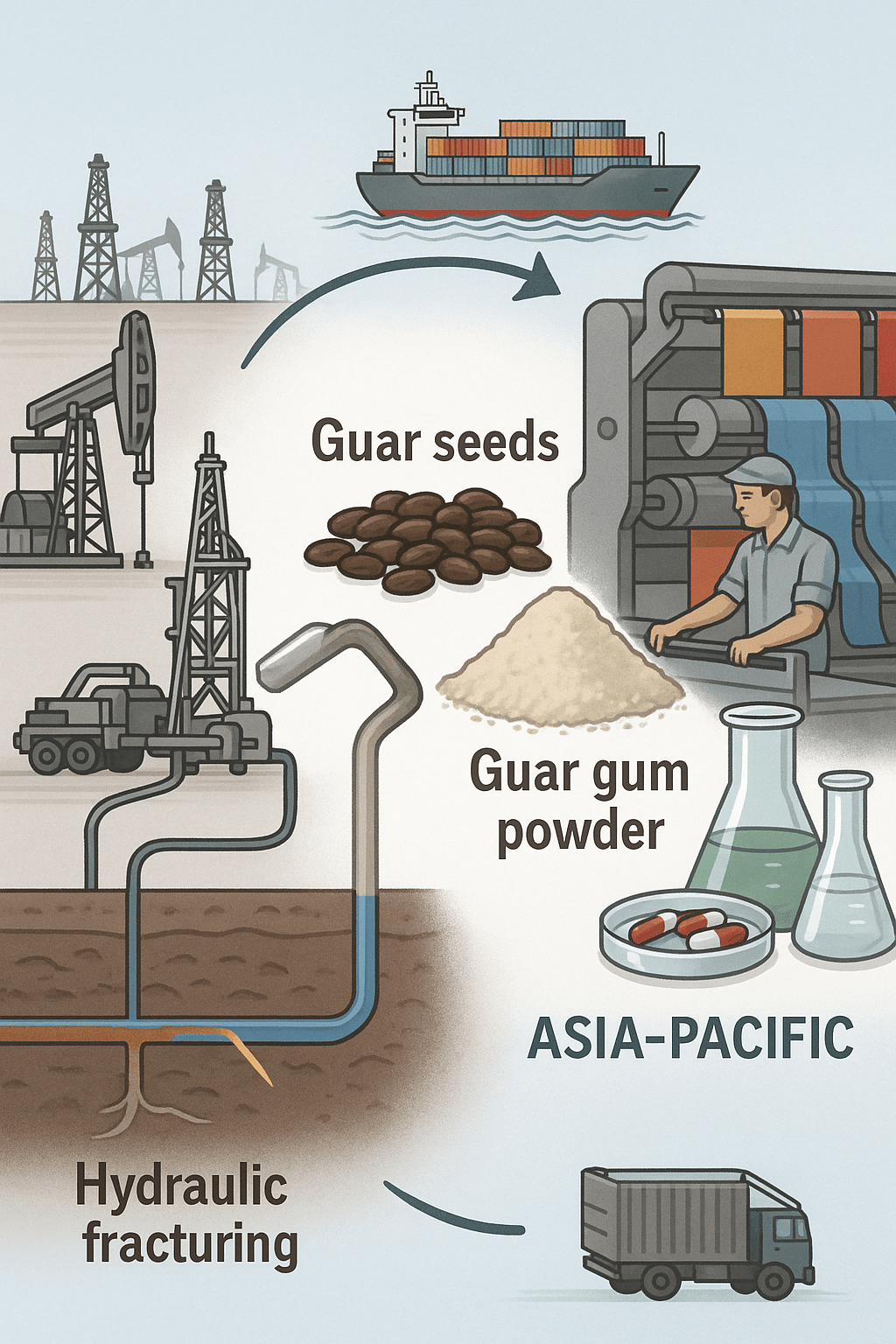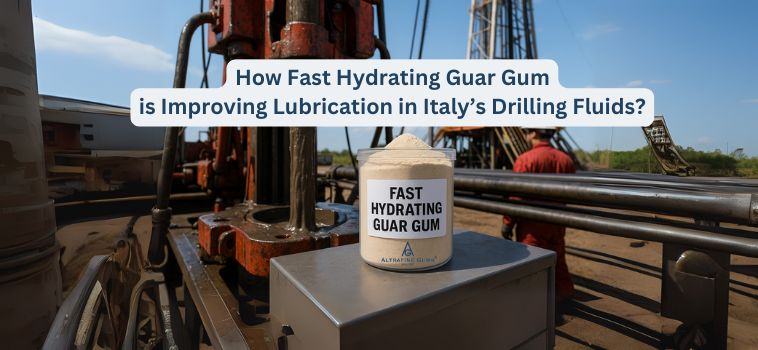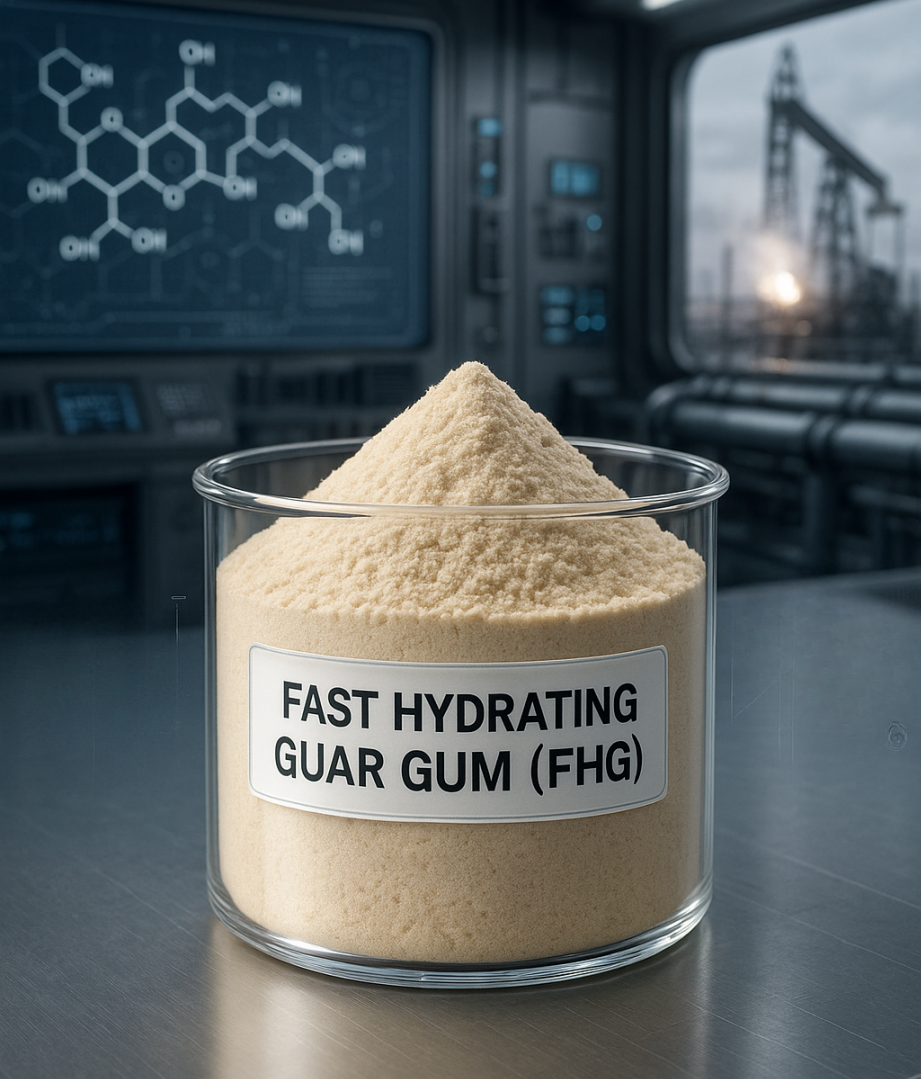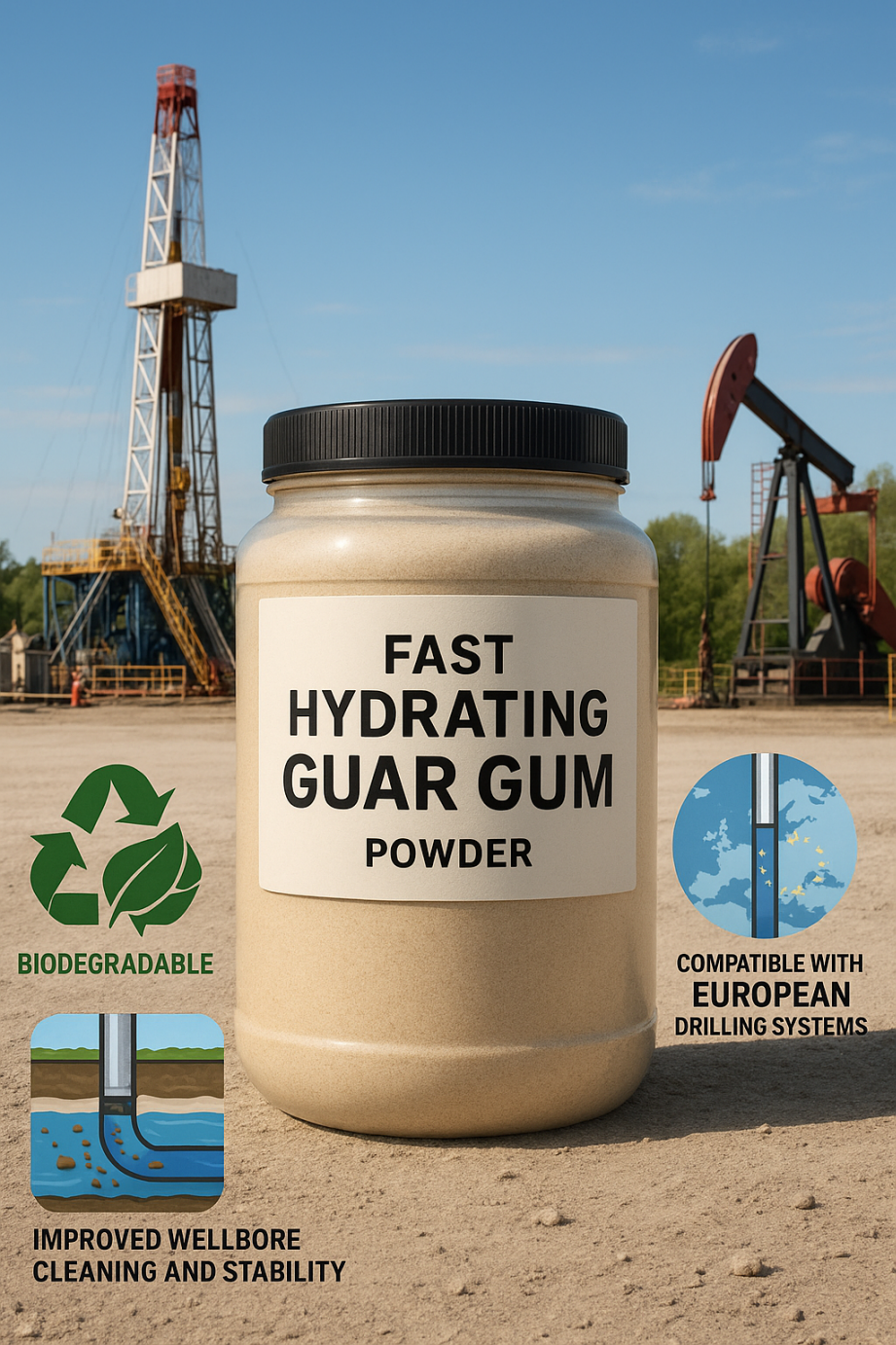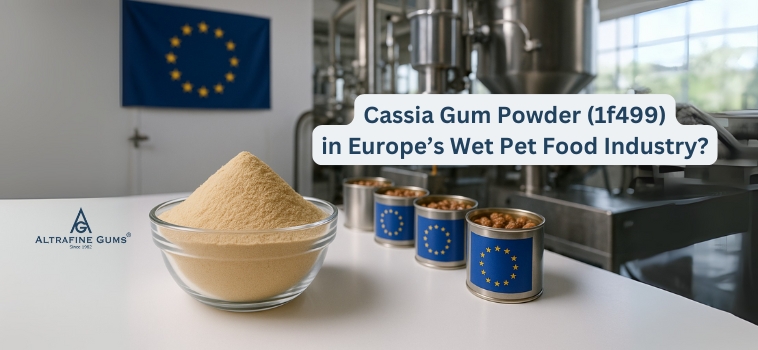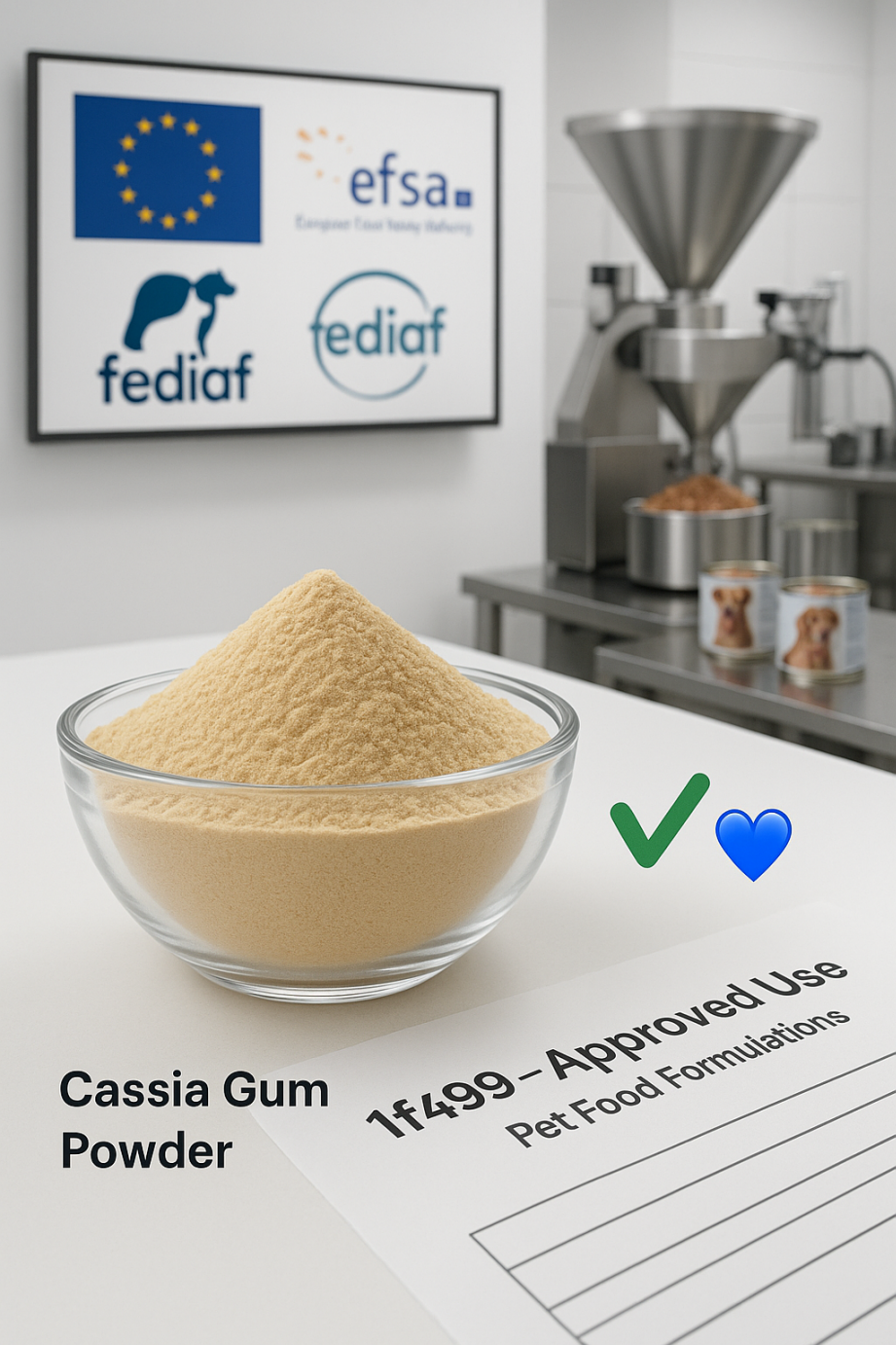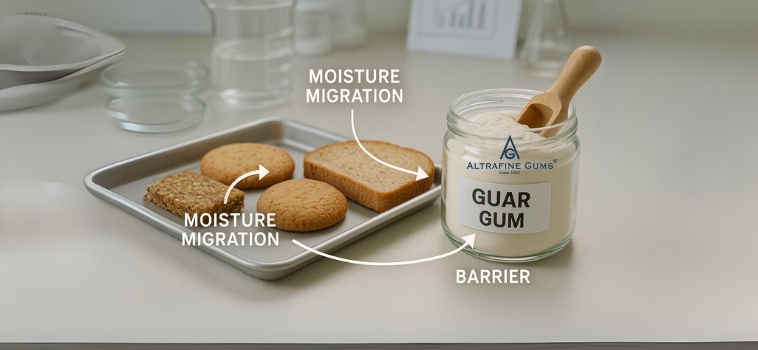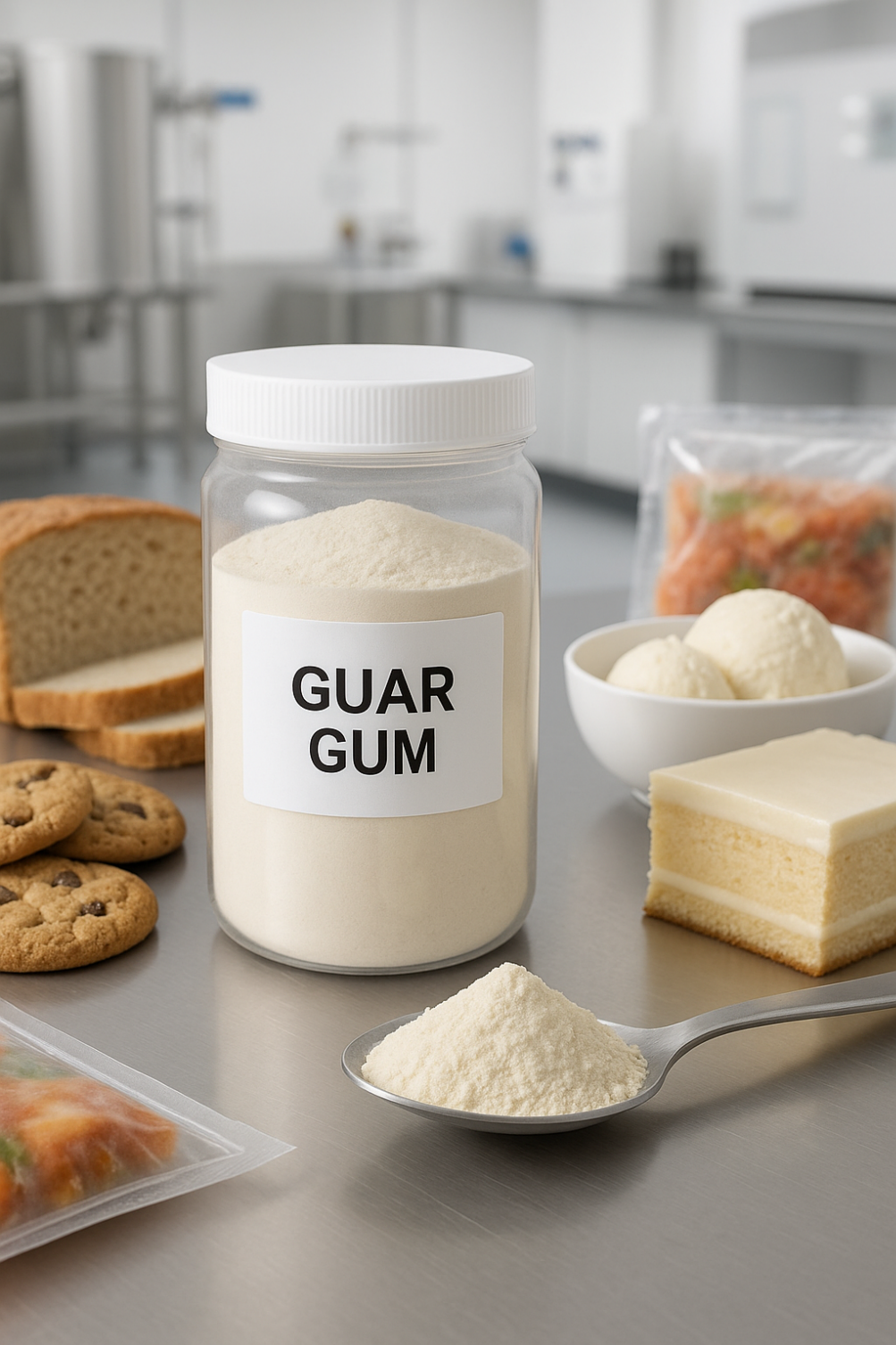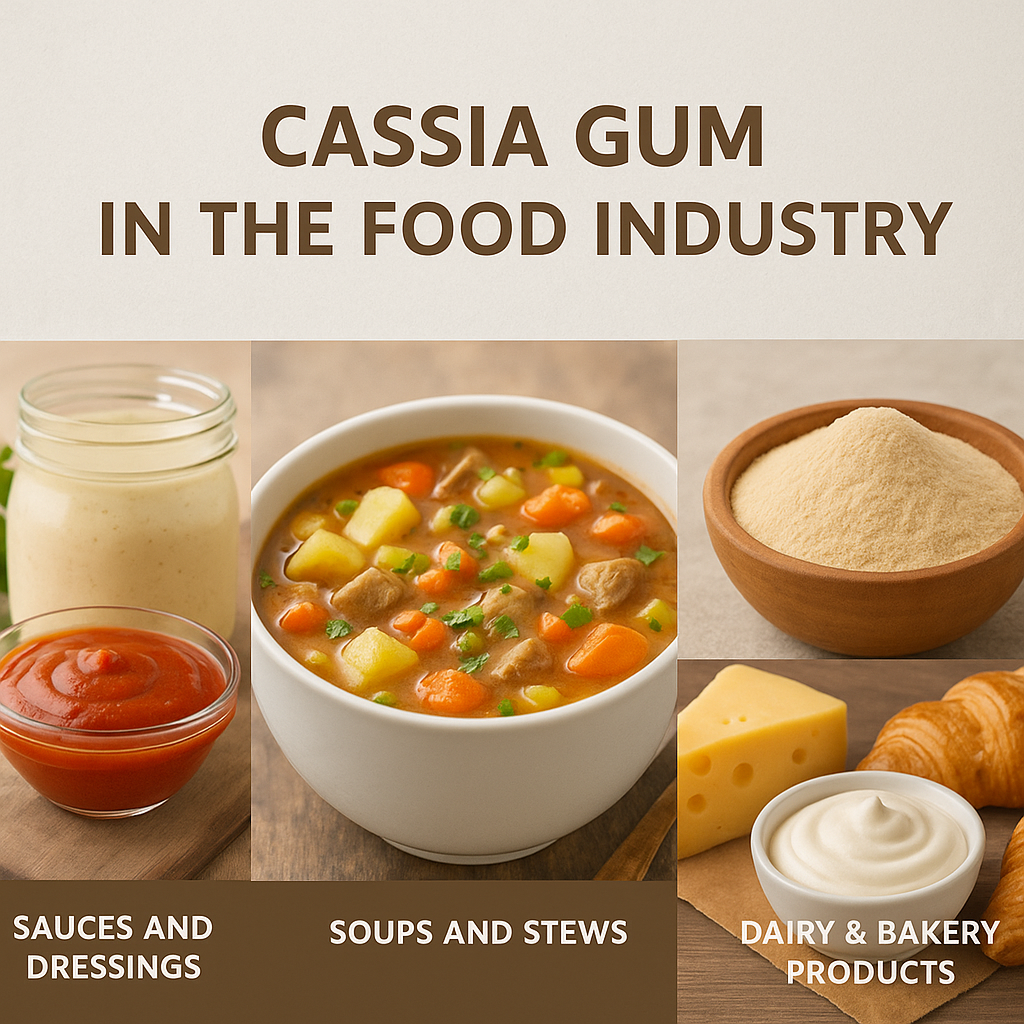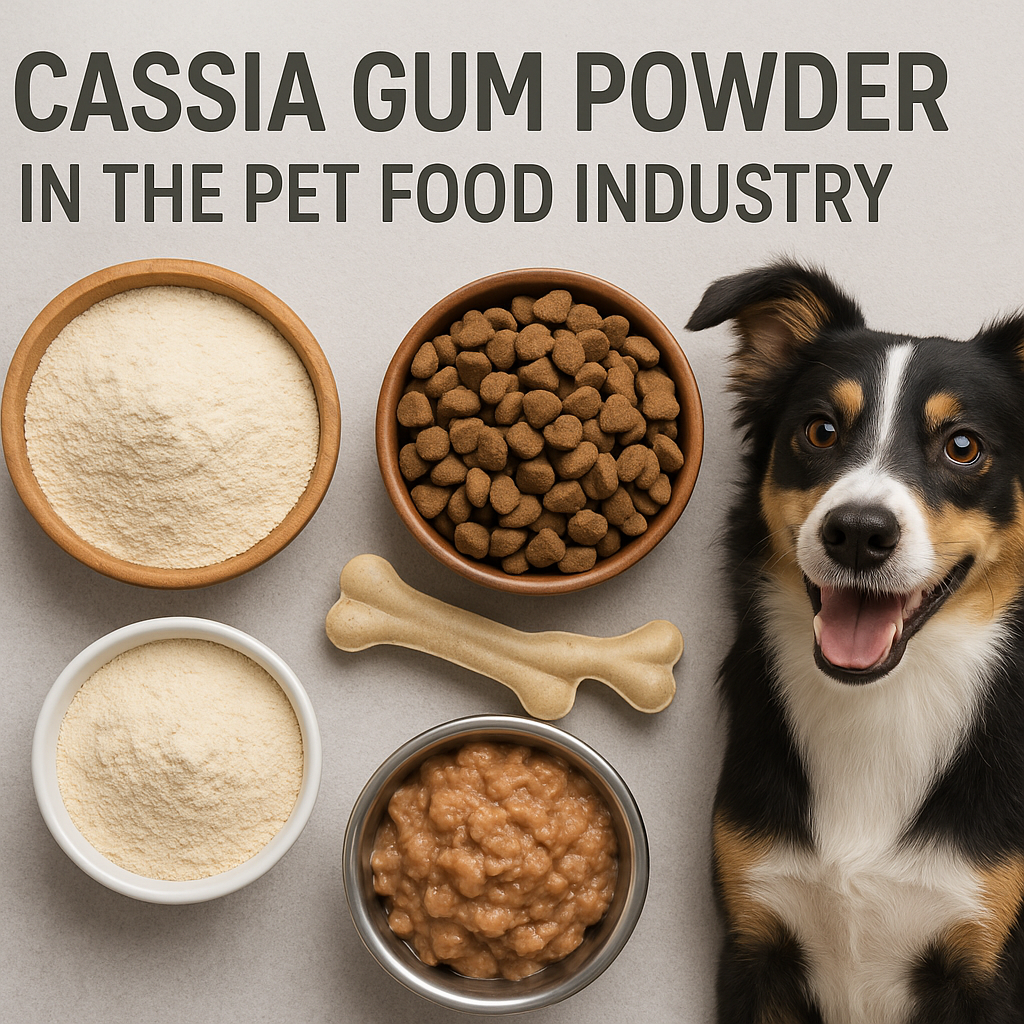Guar gum powder, obtained from the seeds of the guar plant, has a remarkable ability to absorb water, making it an ideal thickening agent in various industries. In the textile industry, guar gum powder is primarily used as a thickener and stabilizer, providing essential functions in dyeing, printing and fabric finishing. This versatile substance has gained immense popularity in Vietnam’s textile sector, which is known for its significant contribution to the global textile trade.
In Vietnam, manufacturers are increasingly turning to guar powder as a natural and eco-friendly alternative to synthetic chemicals. With growing awareness about sustainability, the demand for guar gum powder benefits has surged. This natural product not only reduces reliance on harmful substances but also improves the overall quality and consistency of textile products, making it a key player in the industry’s modernization.
How Is the Textile Industry in Vietnam Embracing Natural and Sustainable Alternatives?
Vietnam’s textile industry has been experiencing a transformation toward more sustainable practices. The increasing interest in guar gum powder is part of a broader movement to adopt natural, plant-based solutions. Manufacturers are actively seeking alternatives to synthetic chemicals, which can harm the environment and public health. Guar gum’s biodegradable properties, along with its ability to reduce waste, make it an ideal choice for the textile sector, which is traditionally associated with high chemical usage and environmental pollution.
By adopting guar gum powder in textile processing, Vietnam’s manufacturers are aligning with global trends favoring sustainability. The shift to eco-friendly alternatives not only enhances the quality of textile products but also positions Vietnam as a leader in the global marketplace, where demand for sustainable textiles continues to rise.
Role of Guar Gum Powder in Textile Dyeing and Printing in Vietnam
How Does Guar Gum Powder Function as a Thickening Agent in Textile Dyeing Processes?
Guar gum powder plays a crucial role in textile dyeing and printing processes by acting as a thickener. Its water-absorbing properties enable it to thicken dye pastes, ensuring that they adhere evenly to fabrics, which is essential for producing vibrant, high-quality prints. In Vietnam, guar gum powder is used widely in dyeing operations to enhance the consistency and uniformity of dye application. This results in smoother, sharper designs that meet both aesthetic and durability requirements in the textile market.
The use of guar gum as a thickening agent provides manufacturers with greater control over the dyeing process, improving the overall appearance and colorfastness of the textiles. It also prevents the issues associated with dye segregation, which can lead to uneven colors and poor-quality prints.
What Are the Benefits of Guar Gum Powder in Textile Dyeing and Printing?
The guar gum powder benefits in textile dyeing and printing are manifold. First and foremost, it improves the consistency of dye pastes, which leads to more uniform color application. This is crucial for the production of high-quality textile prints that meet industry standards. Additionally, guar gum powder helps to minimize dye wastage by improving the efficiency of the dyeing process.
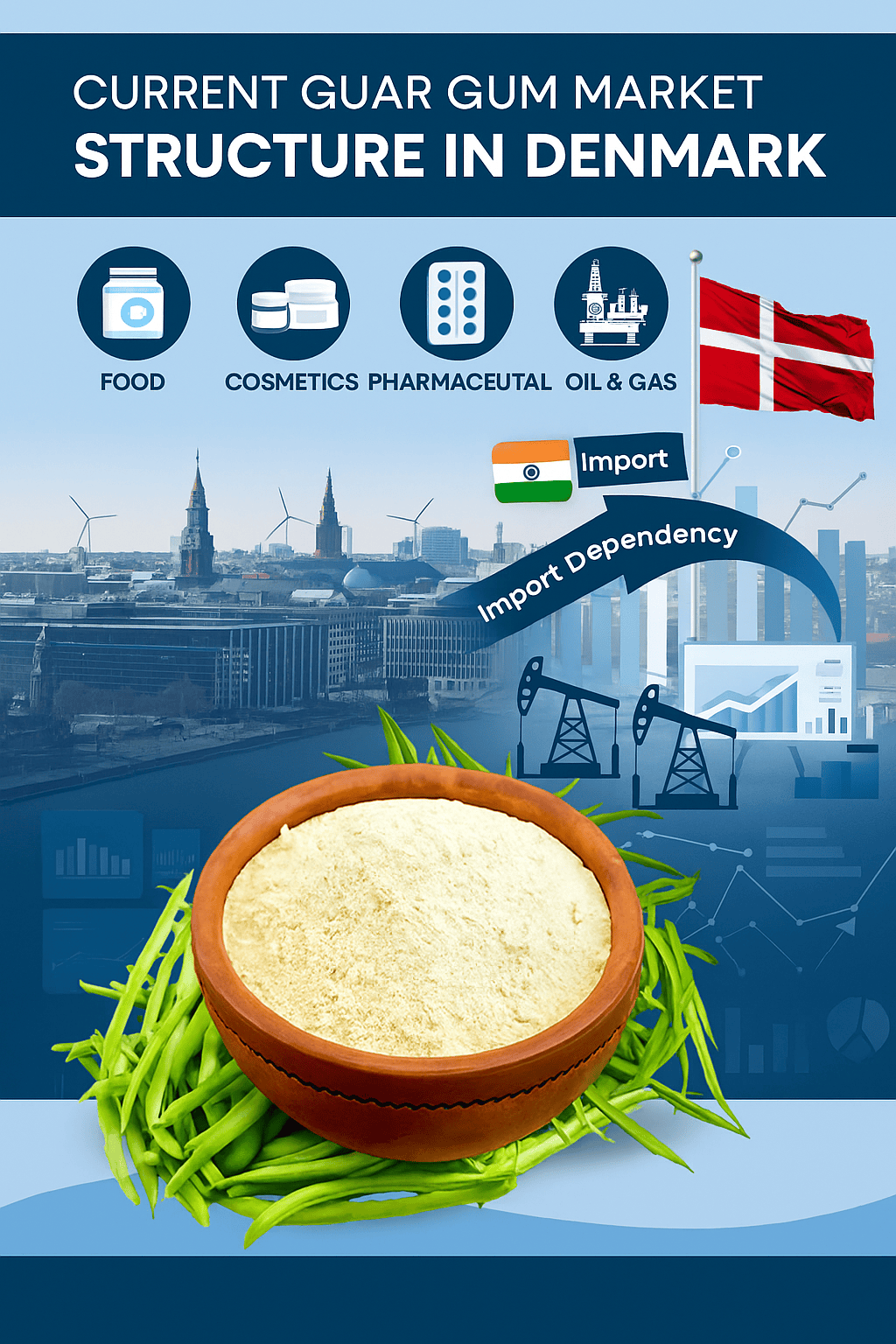
By using guar gum powder stabilizer, textile manufacturers in Vietnam can produce textiles that are not only aesthetically pleasing but also meet the growing consumer demand for eco-friendly products. Guar gum’s biodegradable nature makes it a safer and more environmentally responsible alternative to synthetic chemicals that are often used in dyeing and printing.
Environmental Impact: Guar Gum Powder as a Sustainable Option for Textiles
How Is Guar Gum Powder Helping the Textile Industry in Vietnam Shift Towards More Eco-Friendly Manufacturing Practices?
The shift towards eco-friendly practices in Vietnam’s textile industry is largely driven by the demand for sustainable solutions that reduce environmental impact. Guar gum powder plays a pivotal role in this transformation by providing a more sustainable option for textile production. Traditional textile manufacturing processes often involve the use of harmful chemicals that contribute to pollution and environmental degradation. Guar gum, on the other hand, is biodegradable, non-toxic and sourced from renewable plant material, making it a much more sustainable choice.
The use of guar gum powder thickener in textile manufacturing helps reduce the need for hazardous chemicals, thus lowering the overall environmental footprint of the industry. By replacing harmful substances with natural alternatives, Vietnam’s textile sector can mitigate the negative impacts associated with traditional production methods.
What Role Does Guar Gum Powder Play in Reducing the Environmental Footprint of Textile Production?
The use of guar gum in textile production reduces the environmental footprint in several key ways. First, it minimizes the need for synthetic chemicals, which can contribute to pollution and harm aquatic life when they are washed off during production processes. Additionally, because guar gum powder is biodegradable, it poses less risk to ecosystems and wildlife compared to many synthetic alternatives.
Furthermore, guar gum powder enhances the efficiency of textile dyeing processes, requiring less water and energy for proper fabric treatment. This not only reduces water consumption but also minimizes the carbon emissions associated with textile manufacturing, aligning with global goals to combat climate change and promote sustainable practices.
Economic Benefits of Using Guar Gum Powder in Vietnam’s Textile Industry
How Is Guar Gum Powder Cost-Effective for Textile Manufacturers in Vietnam?
Guar gum powder offers several economic benefits to textile manufacturers in Vietnam. First, it is a relatively low-cost material compared to synthetic alternatives, making it an attractive option for cost-conscious manufacturers. Its use in the textile industry can lead to cost savings by improving the efficiency of dyeing and finishing processes, reducing waste and minimizing the need for expensive chemicals and treatments.
Moreover, guar powder is highly effective in small quantities, meaning that textile manufacturers can achieve significant results with a lower volume of material. This contributes to its cost-effectiveness, making it an appealing choice for both small and large-scale textile producers in Vietnam.
How Does Guar Gum Powder Help Improve Vietnam’s Competitiveness in the Global Textile Market?
The economic benefits of guar powder also contribute to Vietnam’s competitiveness in the global textile market. As international buyers increasingly prioritize sustainability, textiles produced using guar gum powder are likely to be more attractive to global markets that demand eco-friendly products. By adopting guar gum in their production processes, Vietnamese manufacturers can differentiate their products and cater to the growing consumer demand for environmentally conscious textiles.
Furthermore, guar gum powder helps reduce production costs, allowing manufacturers to offer high-quality textiles at more competitive prices. This strengthens Vietnam’s position as a leading textile exporter and enhances its ability to compete with other countries in the global textile industry.
Improving Fabric Quality with Guar Gum Powder in Vietnam
How Does Guar Gum Powder Enhance Fabric Strength, Texture and Softness?
In addition to its role in dyeing and printing, guar gum powder is used in textile finishing processes to improve fabric strength, texture and softness. By enhancing the cohesion of fibers, guar gum helps fabrics retain their shape and durability over time. The result is a softer, more comfortable fabric that maintains its quality after multiple washes.
Textile manufacturers in Vietnam are leveraging guar gum powder to create high-quality fabrics that meet the growing demand for textiles that are both soft to the touch and long-lasting. The versatility of guar powder in improving fabric texture makes it an essential ingredient in finishing treatments.
How Is Guar Gum Powder Used in Finishing Treatments to Improve Textile Quality and Longevity?
Guar gum powder is often used in textile finishing treatments to enhance the durability and appearance of fabrics. It acts as a binder and stabilizer, ensuring that fibers are tightly held together, reducing the risk of fabric damage during handling and wear. This results in textiles that are not only stronger but also retain their softness and texture over time.
The long-lasting benefits of guar gum powder in fabric finishing ensure that textiles retain their quality and longevity, giving them a competitive edge in the global market. Consumers and manufacturers alike can appreciate the added value that guar gum powder brings to fabric durability and performance.
Conclusion
The integration of guar gum in Vietnam’s textile industry is not only revolutionizing the way textiles are produced but also contributing to a more sustainable and economically competitive sector. With its eco-friendly benefits, cost-effectiveness and ability to improve fabric quality, guar gum powder has become an essential material in modern textile manufacturing. As the industry continues to embrace these natural alternatives, guar gum powder will undoubtedly play a significant role in shaping the future of Vietnam’s textile production, helping the country maintain its position as a global leader in the textile market.
FAQs on Guar Gum Powder in Vietnam
How does Guar Gum Powder benefit the textile industry in Vietnam?
Guar Gum Powder improves dyeing consistency, fabric texture and strength, while also providing an eco-friendly alternative to synthetic chemicals.
What role does Guar Gum play in textile dyeing and printing?
Guar Gum thickens dye pastes, ensuring uniform color application and preventing dye wastage, resulting in sharper, more vibrant prints.
How does Guar Gum reduce the environmental impact of textile production?
Guar Gum is biodegradable and non-toxic, reducing the need for harmful chemicals and lowering water and energy consumption in textile manufacturing.
Is Guar Gum Powder cost-effective for textile manufacturers in Vietnam?
Yes, Guar Gum Powder is a low-cost material that improves production efficiency, reduces waste and lowers the need for expensive chemicals.
How does Guar Gum enhance fabric quality in textile production?
Guar Gum improves fabric strength, texture and softness, ensuring longer-lasting, high-quality textiles that retain their appearance and comfort over time.

CEO, Altrafine Gums
With over Four decades of expertise in the natural gums and hydrocolloids industry, Ajit Patel leads Altrafine Gums, a globally recognized manufacturer and exporter of Guar Gum Powder, Cassia Tora Powder (Cassia Gum Powder) and other Hydrocolloids. Under his visionary leadership, the company has built a strong reputation for quality, innovation, and reliability across the food, feed, pet feed, pharmaceutical, mining, oil drilling and cosmetic sectors.
Altrafine Gums has been serving global industries for decades with a focus on sustainable sourcing, research-driven production, and stringent quality control. Its wide product portfolio includes Guar Gum Powder, Cassia Tora Powder (Cassia Gum Powder) and other plant-based hydrocolloids that serve as key functional ingredients in diverse applications.
Ajit Patel’s commitment to excellence ensures that every product from Altrafine meets international standards of performance and purity. He is passionate about advancing the global reach of Indian hydrocolloids, fostering customer trust, and promoting eco-friendly, science-backed solutions that enhance product formulation and performance worldwide.

